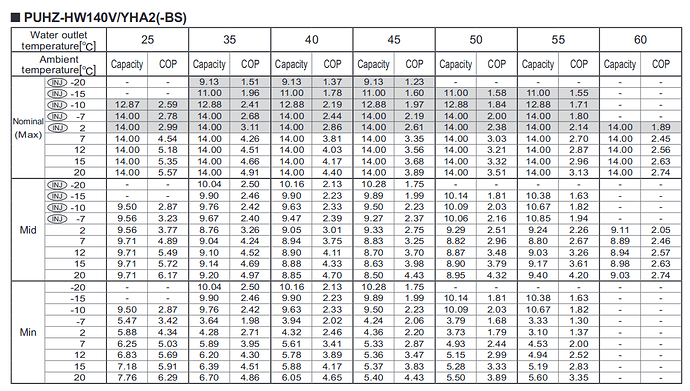Thanks @MyForest Looking at the minimum output at 35C for the 14 kW ecodan it looks like ~6kW at 7C outside temperature. With ~1.5kW elec input.
If all your TRV’s were open it looks like you could absorb that heat at 35C flow temp and keep the heatpump running continuously? But maybe the house would get too warm?
Thanks for all the detail!
